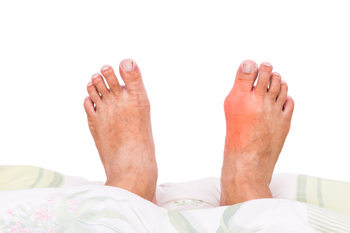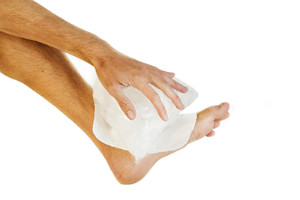Manalapan
(732) 845-0100
Manalapan (732) 845-0100
 The skin on your feet as well as your nails are not immune to melanoma. Also skin and nail
The skin on your feet as well as your nails are not immune to melanoma. Also skin and nail
health is important to overall health. Get checked for melanoma on your feet. Get checked for
tinea pedis (Athletes foot) or nail fungus (onychomycosis). In May we kick off the summer. Soon your feet will be in sandals. Are your feet beach ready?
Make sure your feet are ready for the beach cosmetically and are ready for the increased activity that comes with summer.
If you have any questions, please feel free to contact our offices located in Manalapan, NJ, and Staten Island, NY . We offer the newest diagnostic and treatment technologies for all your foot care needs.
 Keep your feet healthy. This is the perfect time to pay attention to your feet and make sure your feet are in great shape. As you turn your attention to outdoor activities, you need healthy feet to help you get moving.
Keep your feet healthy. This is the perfect time to pay attention to your feet and make sure your feet are in great shape. As you turn your attention to outdoor activities, you need healthy feet to help you get moving.
Have your feet examined for early symptoms that can reveal abnormalities such as diabetes, vascular problems or arthritis. Check your arch. If your arch is lowering this can lead to biomechanical problems and eventual collapse. This can be prevented with early intervention and by avoiding abnormalities that result from flat feet.
It won’t be long until its sandal season and you’ll want your feet to be beach and sandal ready. It’s never too early to treat problems to make sure you look good in sandals on the beach. It is time to start thinking about sandals, no shoes. If your nails and dystrophic thickening or yellow it can be onychomycosis (fungal nail infection). It’s time for a check up. Check skin and nails for signs of infection or abnormalities. Excessive dryness, redness or cracking of skin or nails might be a sign of an underlying medical issue. Thickening and yellow nails are abnormal; these can be a result of local infection or systemic problems
Healthy feet will keep you healthy.
If you have any questions please feel free to contact our offices located in Manalapan, NJ, and Staten Island, NY . We offer the newest diagnostic and treatment technologies for all your foot and ankle needs.
 To stay active, you need to stay healthy. You need healthy feet to do so. As we come out of winter hibernation and become more and more active, take a look at your shoes and sneakers. If there is uneven wear of the heel, it might be time for an alignment.
To stay active, you need to stay healthy. You need healthy feet to do so. As we come out of winter hibernation and become more and more active, take a look at your shoes and sneakers. If there is uneven wear of the heel, it might be time for an alignment.
Biomechanics is the study of motion, movement and the forces acting on the musculoskeletal system. Correct alignment allows for normal use, less pain and less trauma and subsequently injury. If your shoes are being worn down unevenly that is a sign of malalignment and failing biomechanics (pathomechanics). Healthy feet will ensure optimal physical activity.
Foot orthosis (orthotics) treat a range of pathology related to biomechanical dysfunction of the lower limb. Orthotics can re-align the foot ensuring that your function optimally, avoid injury, pain and complications.
Its not to early to think about “Beach ready feet”. Usually thick nails are a sign of fungus. Fungus of nails (onychomychosis) and tinea pedis (Athlete’s foot) can be treated easily, get beach ready
Happy Spring
Make your own luck this St. Patrick’s Day. Get healthy feet.
If you have any questions, please feel free to contact our offices located in Manalapan, NJ, and Staten Island, NY . We offer the newest diagnostic and treatment technologies for all your foot care needs.
 Your feet and legs can reveal heart problems. Heart disease and a lot of its contributing factors can manifest as foot problems.
Your feet and legs can reveal heart problems. Heart disease and a lot of its contributing factors can manifest as foot problems.
Some symptoms in your legs and feet that can reveal heart problems are:
♡ Foot and ankle swelling
♡ Pain in legs while walking, cramping in calf while walking called claudication pain
♡ Loss of hair on feet and legs and cracking of skin or dry skin
♡ Numbness, tingling or burning
♡ Non-healing or slow to heal wounds
♡ Discoloration, coldness in the feet
Your feet can reveal potential underlying heart problems and you can’t have a healthy heart if you can’t walk. If you are experiencing any of these symptoms a check up of your feet can help.
Love your feet this month and they will love you back!! Happy Valentine’s Day!
Do your heart a favor: get a foot check-up.

Bunions, a common foot condition, can cause significant discomfort and affect daily life. Understanding the causes behind their development is important in finding effective preventive measures and treatments. Often, bunions are inherited, as a result of genetic factors influencing foot structure and mechanics. Wearing tight or ill-fitting shoes, especially those with pointed toes or high heels, can exert pressure on the toes and contribute to bunion formation. Foot stress and overuse, commonly seen in athletes or individuals with occupations that require prolonged standing, can also aggravate bunions. Additionally, medical conditions such as arthritis may increase the risk of developing bunions. Gender plays a role, with women being more susceptible due to wearing footwear that cramps the toes. Recognizing these causes empowers individuals to make informed choices regarding footwear and foot care. If you have a bunion, it is suggested that you are under the care of a podiatrist who can help you to manage this condition, and offer potential relief options.
If you are suffering from bunions, contact Dr. Charles Marchese of Manalapan Foot & Ankle. Our doctor can provide the care you need to keep you pain-free and on your feet.
What Is a Bunion?
A bunion is formed of swollen tissue or an enlargement of boney growth, usually located at the base joint of the toe that connects to the foot. The swelling occurs due to the bones in the big toe shifting inward, which impacts the other toes of the foot. This causes the area around the base of the big toe to become inflamed and painful.
Why Do Bunions Form?
Genetics – Susceptibility to bunions are often hereditary
Stress on the feet – Poorly fitted and uncomfortable footwear that places stress on feet, such as heels, can worsen existing bunions
How Are Bunions Diagnosed?
Doctors often perform two tests – blood tests and x-rays – when trying to diagnose bunions, especially in the early stages of development. Blood tests help determine if the foot pain is being caused by something else, such as arthritis, while x-rays provide a clear picture of your bone structure to your doctor.
How Are Bunions Treated?
If you have any questions, please feel free to contact our offices located in Manalapan, NJ, and Staten Island, NY . We offer the newest diagnostic and treatment technologies for all your foot care needs.

Foot pain can send ripples of discomfort through our daily activities, especially when it emanates from the bottom of the foot. This region, comprising muscles, tendons, and ligaments, is susceptible to various triggers. Plantar fasciitis, a common culprit, results from inflammation of the tissue connecting the heel to the toes. Strained arches or flat feet can lead to overuse injuries, causing discomfort along the sole of the foot. Morton's neuroma, a thickening of nerve tissue, can cause sharp pain between the toes. Excessive pressure, wearing ill-fitting footwear, or repetitive motions can contribute to this condition. Proper diagnosis by a podiatrist is essential in accurately pinpointing the cause. With tailored care and lifestyle adjustments, individuals can address the root of their discomfort. If you have pain on the bottom of your foot, it is strongly suggested that you are under the care of a podiatrist who can determine the cause and treat it accordingly.
Foot Pain
Foot pain can be extremely painful and debilitating. If you have a foot pain, consult with Dr. Charles Marchese from Manalapan Foot & Ankle. Our doctor will assess your condition and provide you with quality foot and ankle treatment.
Causes
Foot pain is a very broad condition that could be caused by one or more ailments. The most common include:
Diagnosis
To figure out the cause of foot pain, podiatrists utilize several different methods. This can range from simple visual inspections and sensation tests to X-rays and MRI scans. Prior medical history, family medical history, and any recent physical traumatic events will all be taken into consideration for a proper diagnosis.
Treatment
Treatment depends upon the cause of the foot pain. Whether it is resting, staying off the foot, or having surgery; podiatrists have a number of treatment options available for foot pain.
If you have any questions, please feel free to contact our offices located in Manalapan, NJ, and Staten Island, NY . We offer the newest diagnostic and treatment technologies for all your foot care needs.

Plantar fasciitis is the most common cause of heel pain. Its main symptom is inflammation of the plantar fascia, the tissue connecting the front of the foot to the heel. Plantar fasciitis affects approximately 2 million patients each year, with athletes and individuals between 40 to 60 years of age being the most susceptible. The heel pain can range from sharp to dull, often worsening after prolonged periods of standing or physical activity. Causes of plantar fasciitis include repetitive physical activity, foot arch issues, and increased body weight. If left untreated, heel pain can lead to difficulty in walking. Fortunately, plantar fasciitis can be treated with proper care. Stretching exercises can help to rehabilitate the plantar fascia, and wearing proper footwear with adequate arch support is crucial. In some cases, wearing a foot brace or night splint can help to reduce swelling and alleviate pain. A podiatrist may suggest steroid shots or injections, as well as other pain relief medication, and in extreme cases, surgery may be considered. For help with problems associated with plantar fasciitis, it is suggested that you make an appointment with a podiatrist for an exam and treatment options.
Plantar fasciitis is a common foot condition that is often caused by a strain injury. If you are experiencing heel pain or symptoms of plantar fasciitis, contact Dr. Charles Marchese from Manalapan Foot & Ankle. Our doctor can provide the care you need to keep you pain-free and on your feet.
What Is Plantar Fasciitis?
Plantar fasciitis is one of the most common causes of heel pain. The plantar fascia is a ligament that connects your heel to the front of your foot. When this ligament becomes inflamed, plantar fasciitis is the result. If you have plantar fasciitis you will have a stabbing pain that usually occurs with your first steps in the morning. As the day progresses and you walk around more, this pain will start to disappear, but it will return after long periods of standing or sitting.
What Causes Plantar Fasciitis?
There are some risk factors that may make you more likely to develop plantar fasciitis compared to others. The condition most commonly affects adults between the ages of 40 and 60. It also tends to affect people who are obese because the extra pounds result in extra stress being placed on the plantar fascia.
Prevention
There are a variety of treatment options available for plantar fasciitis along with the pain that accompanies it. Additionally, physical therapy is a very important component in the treatment process. It is important that you meet with your podiatrist to determine which treatment option is best for you.
If you have any questions, please feel free to contact our offices located in Manalapan, NJ, and Staten Island, NY . We offer the newest diagnostic and treatment technologies for all your foot care needs.

A bunion is a bony lump that forms on the side of the big toe. It can become larger, and cause the other toes to move toward each other. Patients who have bunions and find difficulty in completing daily activities may choose to have bunion surgery performed. A bunion can be caused by genetic reasons, or from frequently wearing shoes that are too tight. Foot surgery may be considered, which may be successful in removing the bunion. This is referred to as a bunionectomy, and can be chosen if pain relief is not obtained from nonsurgical methods. After local anesthesia is administered, the podiatrist can determine which type of bunion surgery is best for you. When the joint in the big toe is cut and realigned, this is referred to as an osteotomy. An exostectomy is defined as surgery that removes the bunion and the toe is not aligned. When the deformity is corrected by using metal places or screws, this type of bunion surgery is known as an arthrodesis. If you have a bunion, and are considering surgery, it is strongly suggested that you are under the care of a podiatrist who can determine which type of foot surgery is correct for you.
Foot surgery is sometimes necessary to treat a foot ailment. To learn more, contact Dr. Charles Marchese of Manalapan Foot & Ankle. Our doctor will assist you with all of your foot and ankle needs.
When Is Surgery Necessary?
Foot and ankle surgery is generally reserved for cases in which less invasive, conservative procedures have failed to alleviate the problem. Some of the cases in which surgery may be necessary include:
What Types of Surgery Are There?
The type of surgery you receive will depend on the nature of the problem you have. Some of the possible surgeries include:
Benefits of Surgery
Although surgery is usually a last resort, it can provide more complete pain relief compared to non-surgical methods and may allow you to finally resume full activity.
Surgical techniques have also become increasingly sophisticated. Techniques like endoscopic surgery allow for smaller incisions and faster recovery times.
If you have any questions please feel free to contact our offices located in Manalapan, NJ, and Staten Island, NY . We offer the newest diagnostic and treatment technologies for all your foot and ankle needs.

Big toe joint pain can be caused by various conditions, like arthritis, bunions, gout, sesamoiditis, or turf toe. These conditions can lead to stiffness, swelling, and a grinding sensation. Even though the toe joints are small, they support a significant amount of body weight and play a crucial role in foot function. The most common form of arthritis affecting the big toe is osteoarthritis, which results from tissue erosion between bones and joints. It makes it difficult to straighten the toe and causes pain while standing or walking. Bone spurs can also develop on the top of the big toe, leading to pain, particularly when wearing shoes. Bunions, characterized by a large bump on the joint of the big toe, are deformities that cause the toe to shift towards the smaller toes. They can be caused by things such as genetics, tight shoes, or rheumatoid arthritis. Finding comfortable shoes becomes challenging, and wearing them can be painful. Bunions result in redness, irritation, and swelling on the side of the big toe. Gout, another type of arthritis, occurs when uric acid builds up in the blood, forming crystals that deposit into a joint, often affecting the big toe joint. Uric acid is a waste product that accumulates when purines, found in certain foods like red meat, seafood, and alcohol, are broken down. Failure to eliminate uric acid through the kidneys can lead to gout, causing intense pain, swelling, redness, and heat in the joint. Since big toe pain can have various causes, it is suggested that you consult a podiatrist for an examination, a diagnosis, and the appropriate treatment options.
Toe pain can disrupt your daily activities. If you have any concerns, contact Dr. Charles Marchese of Manalapan Foot & Ankle. Our doctor can provide the care you need to keep you pain-free and on your feet.
What Causes Toe Pain?
Most severe toe pain is caused due to a sports injury, trauma from dropping something heavy on the toe, or bumping into something rigid. Other problems can develop over time for various reasons.
Toe pain can be caused by one or more ailments. The most common include:
When to See a Podiatrist
Diagnosis
In many cases the cause of toe pain is obvious, but in others, a podiatrist may want to use more advanced methods to determine the problem. These can range from simple visual inspections and sensation tests to X-rays and MRI scans. Prior medical history, family medical history, and any recent physical traumatic events will all be taken into consideration for a proper diagnosis.
Treatment
Treatments for toe pain and injuries vary and may include shoe inserts, padding, taping, medicines, injections, and in some cases, surgery. If you believe that you have broken a toe, please see a podiatrist as soon as possible.
If you have any questions please feel free to contact our offices located in Manalapan, NJ, and Staten Island, NY . We offer the newest diagnostic tools and technology to treat your foot and ankle needs.

Lower back pain is not something to take lightly, as it can dramatically affect your overall health and well being. Interestingly, lower back pain has a notable connection to the feet, since the feet are essentially the foundation of the entire human body. Orthotics, or shoe inserts that are custom or over-the-counter, can be used to address lower back pain. Orthotics are a non-surgical, non-invasive option that might be used by patients to address their lower back pain without undergoing a surgical procedure. The orthotics can be used to put the feet in optimal alignment and motion, thereby supporting the back. If you are someone that is struggling with lower back pain or chronic back pain, it is suggested that you schedule an appointment with a podiatrist who can provide guidance, advice, and assistance regarding custom orthotics.
If you are having discomfort in your feet and would like to try orthotics, contact Dr. Charles Marchese from Manalapan Foot & Ankle. Our doctor can provide the care you need to keep you pain-free and on your feet.
What Are Orthotics?
Orthotics are inserts you can place into your shoes to help with a variety of foot problems such as flat feet or foot pain. Orthotics provide relief and comfort for minor foot and heel pain but can’t correct serious biomechanical problems in your feet.
Over-the-Counter Inserts
Orthotics come in a wide variety of over-the-counter inserts that are used to treat foot pain, heel pain, and minor problems. For example, arch supports can be inserted into your shoes to help correct overarched or flat feet, while gel insoles are often used because they provide comfort and relief from foot and heel pain by alleviating pressure.
Prescription Orthotics
If over-the-counter inserts don’t work for you or if you have a more severe foot concern, it is possible to have your podiatrist prescribe custom orthotics. These high-quality inserts are designed to treat problems such as abnormal motion, plantar fasciitis, and severe forms of heel pain. They can even be used to help patients suffering from diabetes by treating foot ulcers and painful calluses and are usually molded to your feet individually, which allows them to provide full support and comfort.
If you are experiencing minor to severe foot or heel pain, it’s recommended to speak with your podiatrist about the possibilities of using orthotics. A podiatrist can determine which type of orthotic is right for you and allow you to take the first steps towards being pain-free.
If you have any questions please contact our offices located in Manalapan, NJ, and Staten Island, NY . We offer the newest diagnostic and treatment technologies for all your foot and ankle needs.